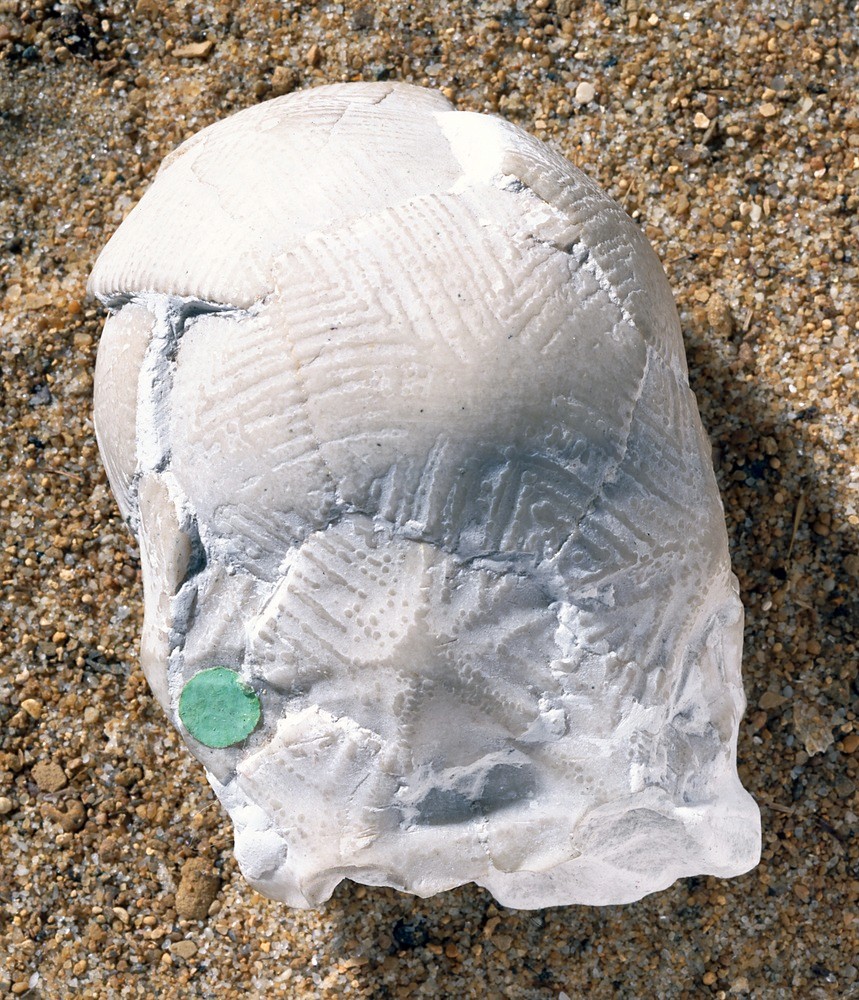| P number: | P549497 |
|---|---|
| Caption: | Marsupites testudinarius, a fossil crinoid. |
| Description: | The photograph shows a calyx and group of five calyx plates of the fossil crinoid ('sea lilies') called Marsupites. This particular species is Marsupites testudinarius. These animals were related to sea-urchins, and lived in the warm tropical sea which covered Britain during the late Cretaceous times (about 84 million years ago). The first specimen in the group of fossils shows what the animal looked like. It comprised a cup (called a 'calyx'), in which the animal lived, but unlike most other kinds of crinoids, it did not have a stem. The cup is made out of a number of calcite plates (four are illustrated) which may be ornamented with ribs. The cup, which varies in size up to about 6 cm. in diameter, had a large plate closing the top, and a number of arms would have reached upwards collecting food from the seawater. Crinoids are an ancient group of animals that first appeared during the Cambrian times, over 500 million years ago, and can still be found living today. The animal lived in a cup-like structure ('calyx') made of numerous calcite plates. It had many arms ('brachials'), which waved in the sea water above the animal to collect food. The calyx of most crinoids is attached to a long flexible stem, made of a stack of calcite plates ('columnals'), that was anchored to the sea bed, sometimes by a holdfast. |
| Photographer: | Unknown |
| Copyright statement: | NERC |
| Orientation: | Portrait |
| Size: | 599.51 KB; 859 x 1000 pixels; 73 x 85 mm (print at 300 DPI); 227 x 265 mm (screen at 96 DPI); |
| Average Rating: | Not yet rated |
| Categories: | Best of BGS Images/ Fossils |
Reviews
There is currently no feedback

